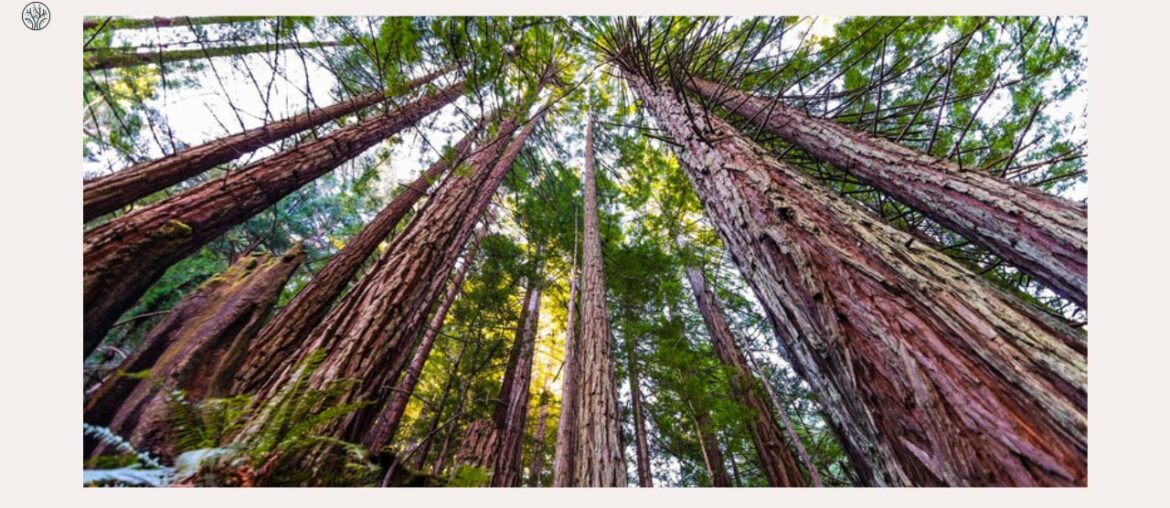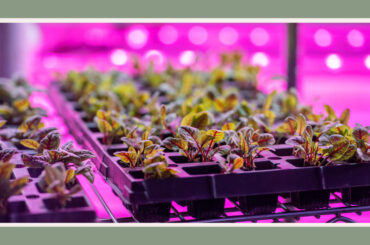As we observe the towering majesty of trees, we often wonder: Where do trees get their mass? It’s a fascinating journey through the elements that sustain life on Earth to answer this question. In this article, we will break it down, shedding light on the sources of a tree’s mass.
Soil
Let’s start with the foundation of a tree’s growth – the soil. It’s here that a significant portion of a tree’s mass originates. The process begins with the tree’s intricate root system, which extends deep into the Earth.
Roots come in various forms, from deep taproots to shallow, wide-spreading systems, depending on the tree species and the soil conditions. This diversity helps trees adapt to different environments.
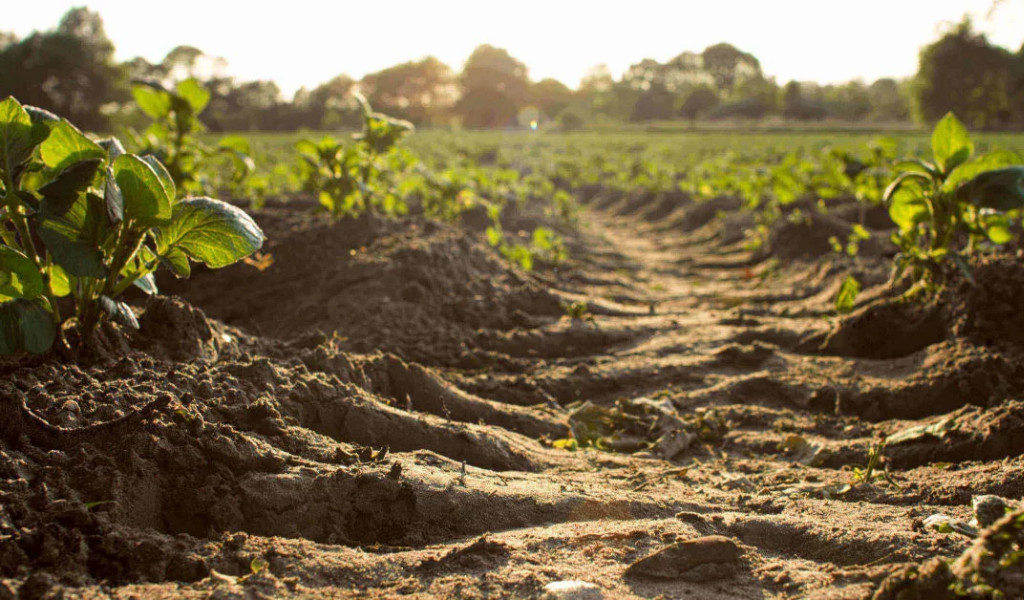
The roots of a tree act as nature’s nutrient miners. They reach into the soil to extract essential minerals and nutrients for the tree’s growth and development. These nutrients include nitrogen, phosphorus, potassium, and various trace elements.
In addition to nutrients, trees absorb water from the soil through their roots. This water serves multiple purposes, including hydrating the tree, transporting nutrients to various parts, and participating in the crucial process of photosynthesis.
As the tree extracts nutrients and water from the soil, it begins transforming these raw materials into the majestic structure we see above the ground.
Sunlight
Next up is the power of the sun. Trees are remarkable solar energy converters. Through photosynthesis, trees use the energy from sunlight to transform carbon dioxide and water into glucose and oxygen. This glucose is the tree’s primary energy source, while the oxygen is released into the atmosphere, benefitting us and other living creatures.
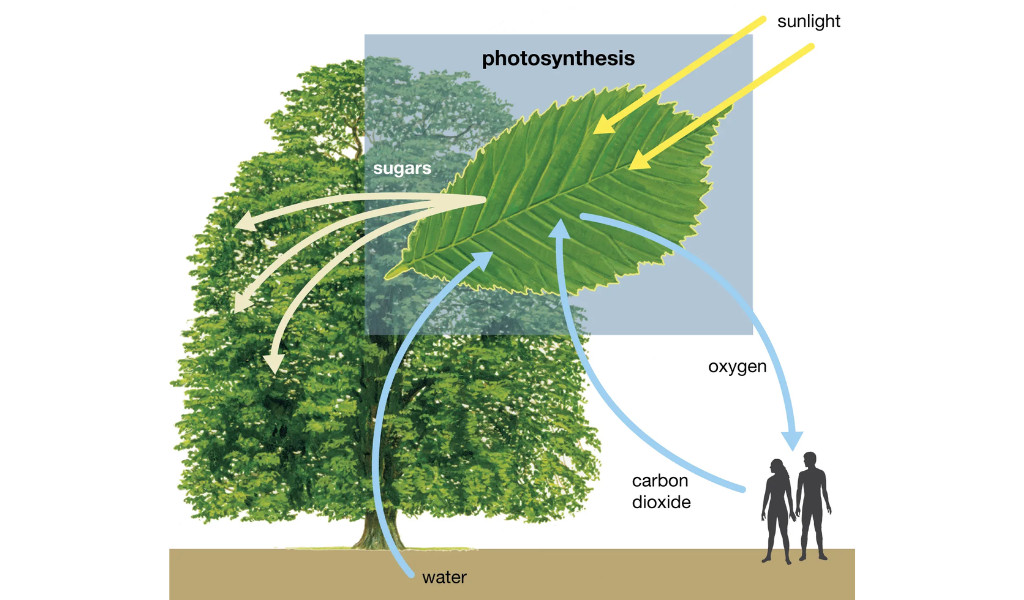
Additional Information: The green pigment in leaves, chlorophyll, plays a central role in photosynthesis. It captures the sun’s energy and turns it into chemical energy, which is stored in the form of glucose.
Air
Trees get most of their mass from the air, specifically through the carbon dioxide they absorb. During photosynthesis, trees absorb carbon dioxide from the atmosphere through tiny pores in their leaves, known as stomata.
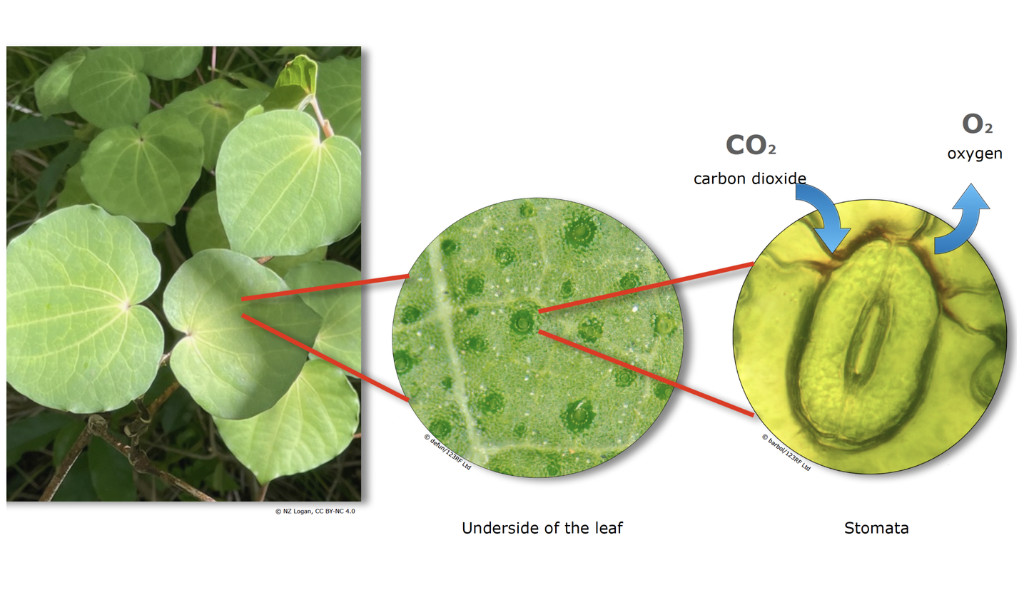
As mentioned above, the carbon dioxide combines with water drawn up from the roots and, with the aid of sunlight, gets converted into glucose and oxygen. Carbon is a critical component in this process.
As the tree undergoes photosynthesis, the carbon from carbon dioxide is incorporated into its structure, turning into branches, trunks, and leaves. This carbon makes up about 50% of the tree’s dry mass, making it the primary source of its growth.
So, the next time you look at a towering tree, remember that its majestic form is largely a product of the air we breathe. It’s a beautiful cycle that sustains life on Earth, with trees acting as silent, steadfast contributors.
Water
Water, the elixir of life, also plays a crucial role in a tree’s mass gain. Trees absorb water through their roots, and this water serves several essential functions.
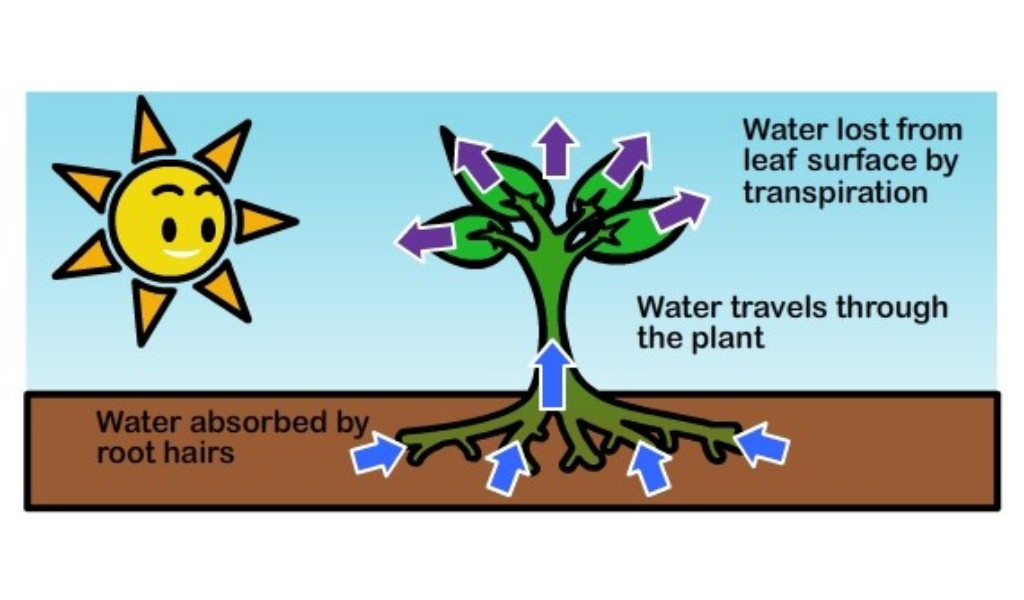
First and foremost, it participates in the photosynthesis process, providing the hydrogen atoms necessary to create glucose from carbon dioxide.
Secondly, water helps maintain the tree’s turgor pressure, keeping it upright and stable.
Finally, water serves as a medium for transporting nutrients from the soil to various parts of the tree.
Trees have an impressive ability to transport water from their roots to their leaves. This process is powered by transpiration – the loss of water vapor from leaves, which creates a ‘pull’ that draws water up through the tree’s tissues.
See more: What side of the tree does moss grow?
FAQs
How much of a tree’s mass comes from the air?
A substantial portion of a tree’s mass comes from the air, mainly in the form of carbon. During photosynthesis, trees absorb carbon dioxide from the atmosphere and convert it into glucose, which makes up a significant part of the tree’s biomass.
Where do plants get their biomass?
Plants, including trees, get their biomass from a combination of sources, including the soil, the air, water, and sunlight. It gets essential minerals and nutrients from the ground and absorbs carbon dioxide from the air. Water is also a significant contributor, as it provides the hydrogen necessary for glucose production, and sunlight is the energy source for photosynthesis.
The Bottom Line
Overall, the mass of a tree is a product of the synergy between soil, sunlight, air, and water. Understanding where trees get their mass not only deepens our appreciation for these magnificent beings but also highlights their critical role in maintaining a balanced ecosystem and mitigating climate change. Let’s appreciate these natural wonders for all they offer and continue to protect trees for future generations.

